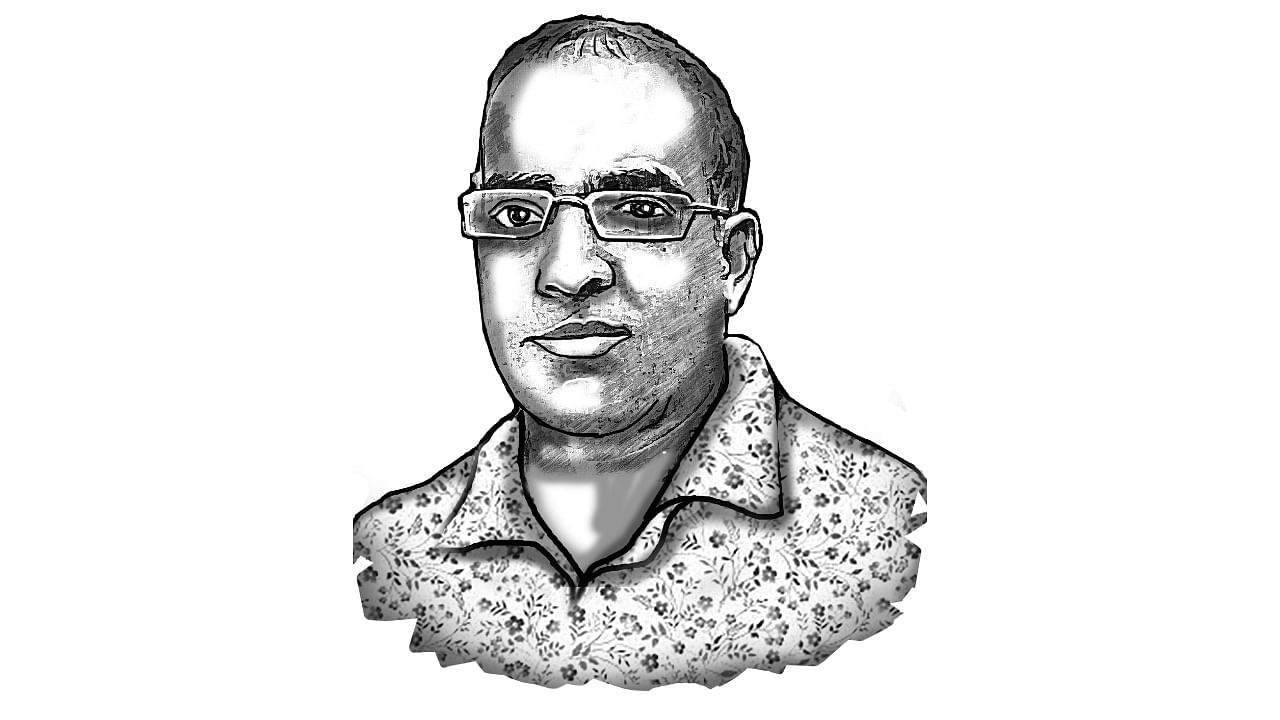
Ashwin Mahesh A social entrepreneur, founder of Mapunity and LVBL, and co-founder, Lithium, wakes up with hope for the city and society, goes to bed with a sigh.
X: @ashwinmahesh
Credit: DH Illustration
For decades, the Union government as well as the states have been declaring how many people they’ve raised out of poverty. If you added all of them up, there really shouldn’t be many poor people left in the country. But that’s nowhere close to being true. Why? Because a very large percentage of those who ‘escaped’ poverty eventually fell back into it, and some others who were not poor at one time also regressed. We have to count these groups, too, to see the full picture, but that rarely happens.
I first came across such data in The Broken Ladder, one of the more compelling books on India’s seemingly endless quest for development in the lower half of the pyramid. Written by Duke University professor Anirudh Krishna, the book is an excellent chronicle of the details the people have to contend with, which often become hurdles to the goals of development programmes and schemes. It’s all very fine to design these and roll them out, but there is a whole lot more that is needed if we expect them to produce results.
Some areas of focus are more promising than others. Health and education, decentralisation of public administration and finances, public participation ... things like that. We’ve read about these a lot, and occasionally even heard of initiatives that incorporated some of them. Around the country, it is possible to find examples of things that were done reasonably correctly. But those have remained exceptions.
Prof Krishna has waded through these, not only in India but elsewhere, too. The last time we spoke, about two years ago, he was working on his next book project -- what he called ‘Talent Ladders’. These are design principles that emerged from his studies of many different programmes in widely different settings. I’ve kept them handy, and tried to think about what they mean in different domains.
1. The bottom rung of any ladder should be widely accessible. People should be able to begin taking up an opportunity or receiving some support without any exclusion. At higher levels, there may be competition to support only some people, but the first step should be universally reachable. The free bus travel scheme, for instance, won’t mean much in areas where there aren’t enough buses.
2. The ladder should be unbroken. This is a simple thing to imagine; we cannot climb to the top of any ladder if some of its rungs are missing. Too often, governments have been rolling out programmes that only take some steps, and inevitably this has led to collapse. The public education system is a prime example of this. No wonder so few are educated by it.
3. Role models are important. At every level, people are inspired to embrace an effort if they see that someone else has done that successfully in the past. A few will even go on to stardom and big success, and it is important to build development programmes in a way that tells their stories widely. Sports administrators in some states are using this approach, but we need a lot more.
4. Only a few people may make it to the top of the ladder; nonetheless the majority need to be able to climb part of it at least. That is only possible if there are soft landings for them. Difficulties that they encounter along the way should not make them fall all the way back, or make it impossible to continue climbing the ladder. Too many programmes assume that everything will go fine, and don’t provide for contingencies.
5. The standards for selection should be transparent and objective. Without this, people quickly lose faith in whatever is promised, and instead conclude that the whole thing is just a charade. Anyone who has studied PSU bank lending to various beneficiaries can write long books on this. It’s mostly led only to waivers, while the poor themselves have stood still.
6. Efforts for change should be society-wide. Most serious problems are also complex, and it is wishful to think that they can be solved simply or just by a few people doing their jobs. Kerala’s initiative to help teenagers avoid substance abuse, and Karnataka’s programmes to get disabled children into schools are both examples of this.
7. Volunteers matter. In trying to solve problems, governments often see only the formal role players and stakeholders. But those who’ve run successful initiatives will tell you that willing and voluntary support for a goal is often a great strength. Our public expenditure should be planned to include this in as many spheres as possible.
8. Individuals may compete for certain benefits, but they must be invested in the success of others, too. Programmes should be designed to foster collaboration and shared success. If we begin with the notion that people care only about themselves, we’ll end up creating that anyway, even if it wasn’t the case to begin with.
9. Last but not the least, programmes need to adapt. We’re still doing many of the things we tried to do last century, in many development schemes, but the world has changed, and what is needed today is not to make the old scheme stronger, but to design one that is appropriate for the present. Without continuous review and learning, we’ll get nowhere.
The next time you read about the government launching a new welfare or development programme, ask yourself if these rungs are in place. At the very least, the answers will provide a credible sense of whether the programme is likely to make a significant difference.